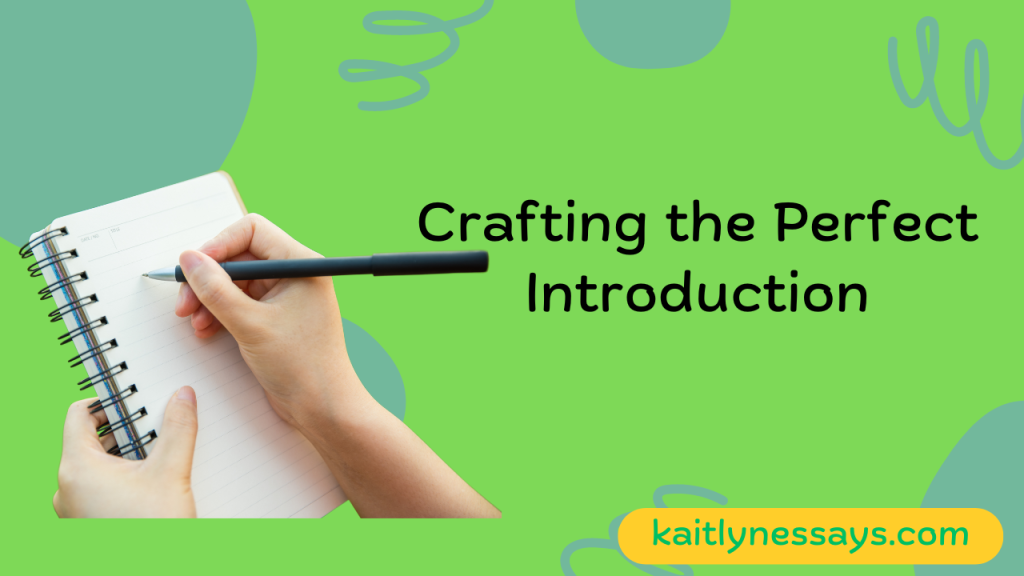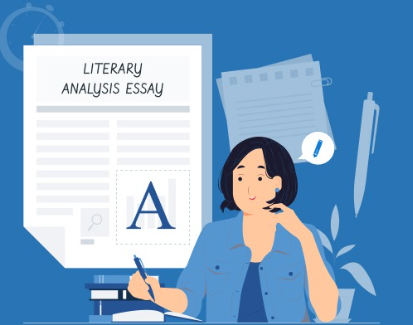
In literary analysis, the introduction serves as the gateway to the interpretation and exploration of a text’s deeper meanings, themes, and nuances. It sets the stage for the reader, providing crucial context, establishing a thesis, and outlining the trajectory of the analysis to follow. As such, crafting a compelling introduction is essential for engaging the reader and laying the groundwork for a coherent and persuasive analysis. In this guide, we will explore the intricacies of writing an effective introduction for a literary analysis essay, exploring key strategies, elements, and techniques to captivate the audience and illuminate the significance of the text at hand.
Understanding the Purpose of the Introduction
Before looking into the specifics of crafting an introduction, it is crucial to understand its overarching purpose within the context of a literary analysis essay. The introduction serves multiple functions, including:
- Providing Context: The introduction offers background information about the text, its author, and the literary context in which it was produced. This contextualization helps orient the reader and provides a framework for interpreting the subsequent analysis.
- Presenting the Thesis Statement: One of the central functions of the introduction is to articulate the essay’s main argument or thesis. This statement outlines the primary claim or interpretation that the analysis will seek to support and explore.
- Previewing the Analysis: The introduction often provides a roadmap for the analysis, outlining the key points or arguments that will be developed in the body paragraphs. This preview helps the reader understand the structure and trajectory of the essay.
- Engaging the Reader: A well-crafted introduction captures the reader’s attention and piques their interest in the text and its analysis. By posing thought-provoking questions, offering intriguing insights, or presenting compelling anecdotes, the introduction encourages the reader to continue reading and invest in the analysis.
Key Elements of an Effective Introduction

To fulfill its various functions, an effective introduction should incorporate several key elements that collectively establish a strong foundation for the analysis. These elements include:
- Hook: The hook is the opening line or lines of the introduction that are designed to grab the reader’s attention and draw them into the essay. This can take the form of a provocative statement, a compelling question, a vivid description, or an intriguing quotation. The hook sets the tone for the analysis and creates anticipation for what is to come.
- Contextual Information: Following the hook, the introduction should provide essential background information about the text, its author, and the broader literary context. This may include details about the historical period in which the text was written, relevant biographical information about the author, and any significant literary movements or influences that shaped the work.
- Thesis Statement: The thesis statement is the central claim or argument of the essay, encapsulating the main interpretation or analysis that the writer will develop and support throughout the paper. The thesis should be clear, specific, and debatable, presenting a unique perspective or insight into the text’s meaning.
- Scope and Structure: In addition to presenting the thesis, the introduction should outline the scope and structure of the analysis. This may involve briefly summarizing the main points or arguments that will be explored in the body paragraphs, providing the reader with a roadmap for navigating the essay.
- Transition: Finally, the introduction should include a transitional sentence or sentences that bridge the gap between the introduction and the first body paragraph. This transition prepares the reader for the shift from the introductory discussion to the in-depth analysis that will follow.
Strategies for Crafting an Engaging Introduction
Crafting an engaging introduction requires careful consideration of language, tone, and structure. Several strategies can help writers create introductions that captivate readers and set the stage for a compelling analysis. Some of these strategies include:
- Start with an Anecdote or Personal Reflection: Opening the introduction with a personal anecdote or reflection can humanize the analysis and establish a connection with the reader. This approach invites the reader into the writer’s experience of engaging with the text, fostering a sense of intimacy and investment in the analysis.
- Pose a Provocative Question: Asking a thought-provoking question at the outset of the introduction can stimulate curiosity and encourage readers to consider the text from a new perspective. The question should be relevant to the themes or issues explored in the analysis, prompting readers to reflect on their own interpretations and assumptions.
- Use Vivid Imagery or Description: Incorporating vivid imagery or descriptive language can help create a sensory-rich experience for the reader, immersing them in the world of the text and sparking their imagination. By painting a vivid picture of the setting, characters, or events, the introduction can evoke emotional responses and deepen the reader’s engagement with the analysis.
- Quote from the Text: Selecting a compelling quotation from the text itself can provide a powerful opening for the introduction, offering a glimpse into the themes, language, and style of the work. By choosing a quote that encapsulates the essence of the text or raises provocative questions, the introduction can entice readers to delve deeper into the analysis.
- Highlight the Relevance of the Text: Demonstrating the relevance of the text to contemporary issues or debates can help establish its significance and capture the reader’s interest. By connecting the themes or ideas of the text to broader social, cultural, or political concerns, the introduction can convey the relevance and urgency of the analysis.
Integrating External Sources for Added Depth and Insight

In crafting a literary analysis essay, writers often draw on a variety of external sources to enrich their interpretation and provide additional context and perspective. These sources may include scholarly articles, critical essays, historical documents, biographical accounts, and theoretical frameworks relevant to the text under analysis. Integrating external sources effectively requires careful attention to citation practices and the integration of source material into the broader argument of the essay.
Citation Practices
When incorporating external sources into a literary analysis essay, it is essential to adhere to established citation practices to avoid plagiarism and uphold academic integrity. The Modern Language Association (MLA) style is commonly used in literary studies and provides guidelines for citing sources both within the text and in the Works Cited page. In-text citations typically include the author’s last name and the page number(s) from which the quotation or paraphrase is taken, while the Works Cited page provides detailed bibliographic information for each source cited in the essay.
Integrating Source Material
Integrating source material effectively involves more than simply inserting quotations or paraphrases into the text; it requires thoughtful analysis and synthesis of the ideas presented in external sources. Writers should strive to engage critically with the arguments and evidence presented in external texts, evaluating their relevance and significance in relation to the central thesis of the essay. This may involve comparing and contrasting different perspectives, evaluating the strengths and weaknesses of scholarly interpretations, and situating the analysis within broader scholarly conversations.
Balancing Original Analysis and Secondary Sources
While external sources can provide valuable context and support for the analysis, it is essential to strike a balance between original interpretation and reliance on secondary sources. The primary focus of the essay should be the writer’s own analysis and argument, supported by evidence drawn from the text itself. External sources should complement and enhance the writer’s interpretation, rather than overshadowing it or serving as a substitute for original analysis. Writers should critically evaluate the relevance and credibility of external sources and use them judiciously to support and enrich their own arguments.
Conclusion
Crafting an effective introduction for a literary analysis essay requires careful attention to purpose, structure, and language. By incorporating engaging hooks, providing essential contextual information, articulating a clear thesis statement, and outlining the scope and structure of the analysis, writers can captivate readers and lay the groundwork for a compelling interpretation of the text. Strategies such as using anecdotes, posing provocative questions, employing vivid imagery, quoting from the text, and highlighting the relevance of the text can further enhance the introduction’s impact and draw readers into the analysis.
Additionally, integrating external sources judiciously can enrich the analysis and provide valuable context and perspective, as long as citation practices are followed, and the balance between original analysis and secondary sources is maintained. Ultimately, a well-crafted introduction sets the stage for a nuanced and persuasive exploration of the text’s deeper meanings, inviting readers to engage critically and thoughtfully with the analysis.
Having difficulty expressing your ideas in writing? We are here to help. We specialize in offering high-quality academic writing services, ensuring that your paper is not only well-written but also demonstrates a thorough understanding of the subject. With our experienced professionals assisting you, you can transform any challenging topic into a finely crafted masterpiece.
Frequently Asked Questions (FAQs)
1. What is the purpose of the introduction in a literary analysis essay?
- The introduction serves multiple purposes, including providing context for the text, presenting the thesis statement, previewing the analysis, and engaging the reader.
2. How can I engage readers with my introduction?
- Engage readers by starting with a compelling hook, such as an anecdote, question, or quotation. Use vivid language and imagery to draw readers into the world of the text.
3. What should be included in the thesis statement?
- The thesis statement should encapsulate the main argument or interpretation of the essay in a clear, specific, and debatable manner. It sets the direction for the analysis and guides the reader through the essay.
4. How do I integrate external sources into my introduction?
- External sources can be integrated by providing relevant background information, citing scholarly perspectives, or quoting from secondary sources to support your argument. Ensure proper citation practices are followed according to the MLA style.
5. How can I maintain a balance between original analysis and secondary sources?
- While external sources can enhance your analysis, ensure that the primary focus remains on your original interpretation of the text. Use secondary sources to complement and enrich your argument, rather than overshadowing it.
6. Are there any specific strategies for writing an effective introduction?
- Yes, strategies such as using anecdotes, posing provocative questions, employing vivid imagery, quoting from the text, and highlighting the relevance of the text can enhance the impact of your introduction and draw readers into the analysis.
7. How long should the introduction be?
- While there is no set length for the introduction, it should be concise yet comprehensive enough to establish context, present the thesis, and engage the reader effectively. Aim for clarity and coherence in your introduction.
8. Should I include a Works Cited page for my sources?
- Yes, it is essential to include a Works Cited page for all sources cited in your essay, following the guidelines of the MLA citation style. This page provides detailed bibliographic information for each source, ensuring proper attribution and academic integrity.
9. Can I revise my introduction after completing the essay?
- Yes, revising the introduction is a common practice in the writing process. After completing the essay, you may find it helpful to revisit the introduction to ensure that it effectively reflects the content and argument of the essay as a whole.
10. Where can I find additional resources on writing introductions for literary analysis essays?
- You can find additional resources in writing guides, academic journals, and online tutorials focused on literary analysis and essay writing. Libraries, writing centers, and academic websites are valuable sources of information and guidance.
